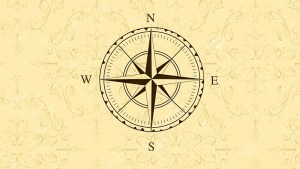Lenten Campaign 2025
This content is free of charge, as are all our articles.
Support us with a donation that is tax-deductible and enable us to continue to reach millions of readers.
The recent eclipse in America provided an opportunity to explain the biblical symbolism of such events and how ancient Christians saw celestial phenomenon in the context of salvation history.

Read more:
The surprising liturgical coincidence of the solar eclipse
However, the eclipse is only the beginning, as Christians used many other objects in the sky to symbolize various Christian truths.
Clouds
Clouds naturally obscure the blue sky and bright sun. For this reason clouds were often used to represent our inability to fully know God. Clouds were often seen as a veil that hid the omnipotent God, and in art God is sometimes depicted as a hand coming out of a cloud.
There is also a separate tradition connected to Elijah and the Blessed Mother. As this tradition relates, during a drought Elijah sent a servant to look at the sea and after the seventh time the servant saw a cloud coming. The Carmelites explain how “That cloud has been recognized as Our Lady, the one who brings the rain, the one who brings the dew to our parched and lifeless souls to be able to bring forth new life. It is the covenant. Jesus is the covenant carried in the womb of Our Lady just as the rain is carried in the cloud and then bursts forth upon the earth.”
Stars
Stars are described throughout the Bible and typically refer to divine guidance or favor. This is most clear in the Star of Bethlehem that led the magi to the infant Jesus. Stars are most often depicted surrounding the head of the Virgin Mary, who is described in Revelation as having a “crown of twelve stars.” Mary is also known as “Star of the Sea,” who points others struggling in this world to the port of Heaven.

Read more:
Ships in art: Symbols of the Church and our pilgrimage to heaven
Sun
The sun is usually representative of Christ, who in the early Church was often depicted as “Sol Invictus” (Unconquered Sun) of Roman mythology. Mary is also described as being “clothed with the sun” in the book of Revelation. Christians usually prayed facing East, the place of the rising sun.

Read more:
The ancient symbolism of North, South, East and West
Moon
The moon is often a symbol of Mary, who reflects the rays of her Son. At the same time, she is described in Revelation as having the “moon under her feet.” Pope Benedict explained how, “This woman has under her feet the moon, a symbol of death and of mortality.”
This symbol is also featured in the popular image of Our Lady of Guadalupe, and one commentary explains, “The moon for the Meso-Americans was the god of the night. By standing on the moon, she shows that she is more powerful than the god of darkness. However, in Christian iconography the crescent moon under the Madonna’s feet is usually a symbol of her perpetual virginity, and sometimes it can refer to her Immaculate Conception or Assumption.”
Rainbow
This occurrence in nature has always been associated with the covenant made with Noah. After the flood God says to Noah, “This is the sign of the covenant that I am making between me and you and every living creature with you for all ages to come: I set my bow in the clouds to serve as a sign of the covenant between me and the earth. When I bring clouds over the earth, and the bow appears in the clouds, I will remember my covenant between me and you and every living creature” (Genesis 9:12-15). As a result, it is also seen as a symbol of God’s faithfulness and mercy.

